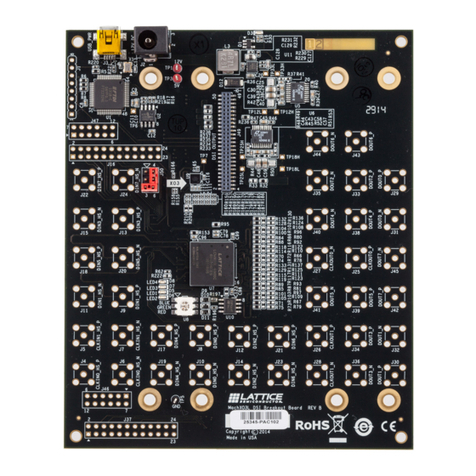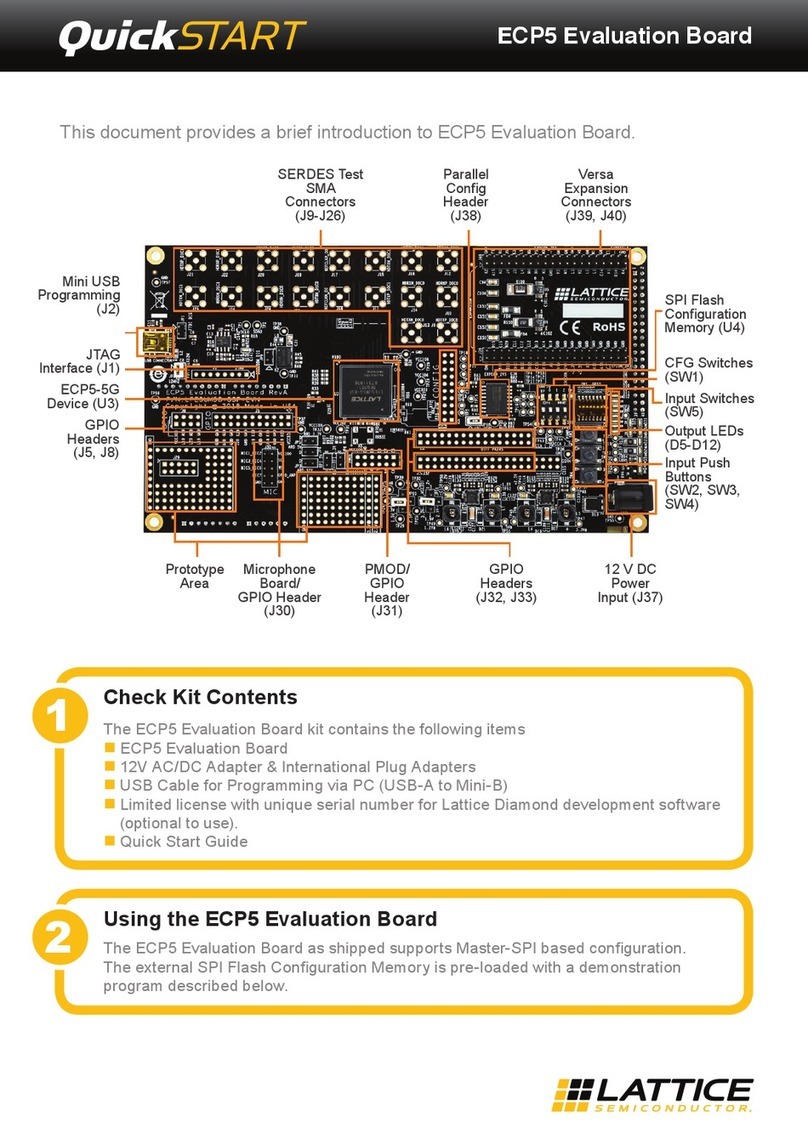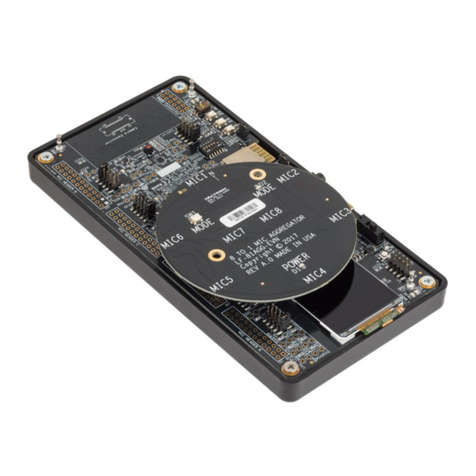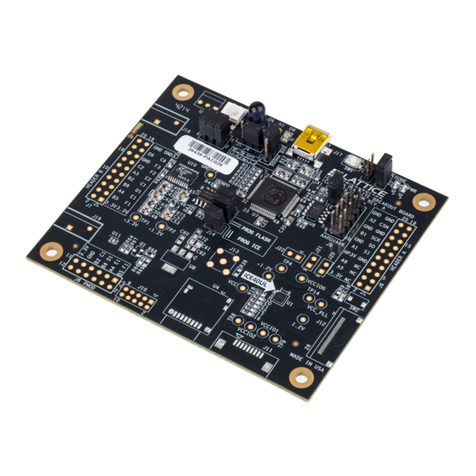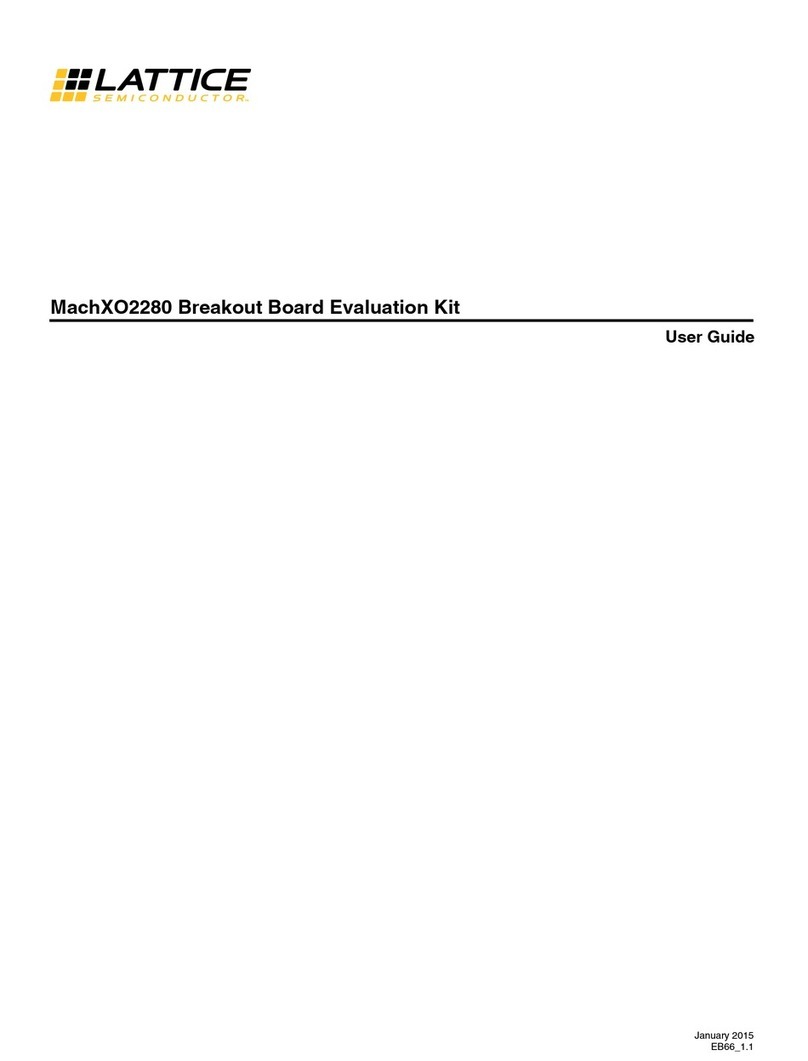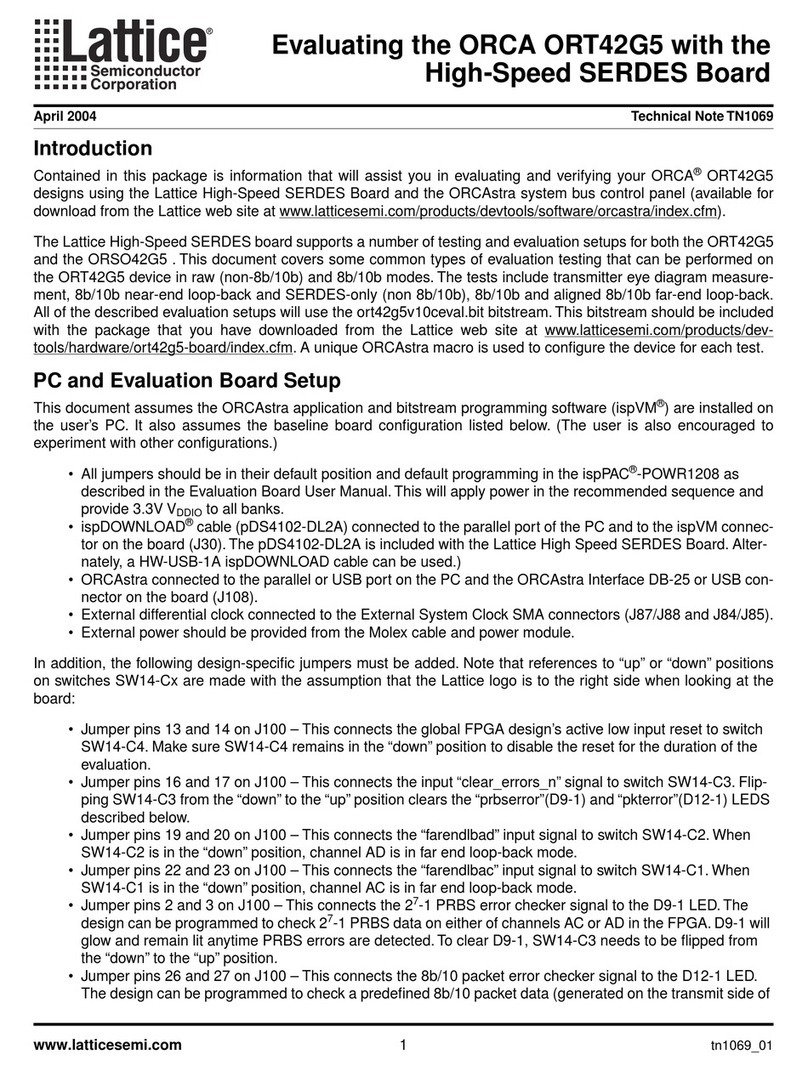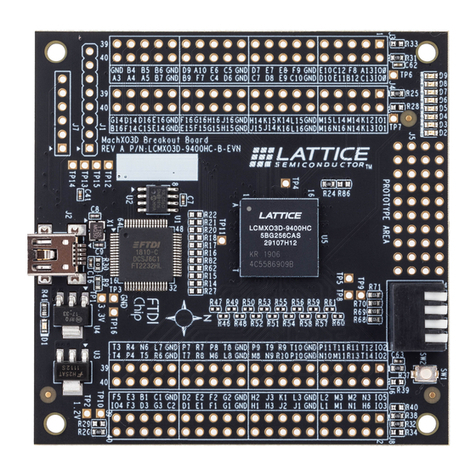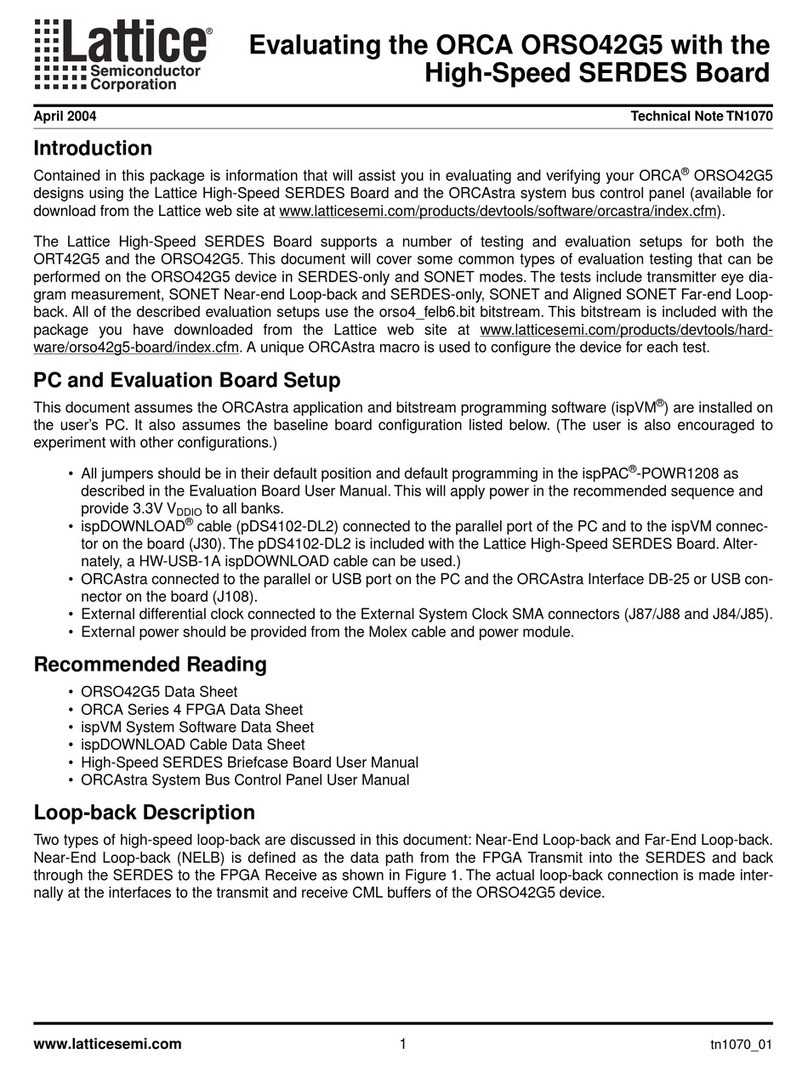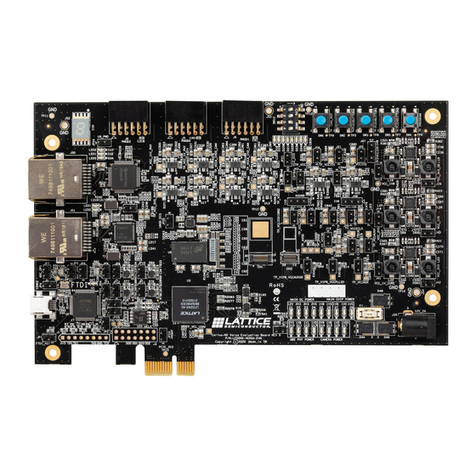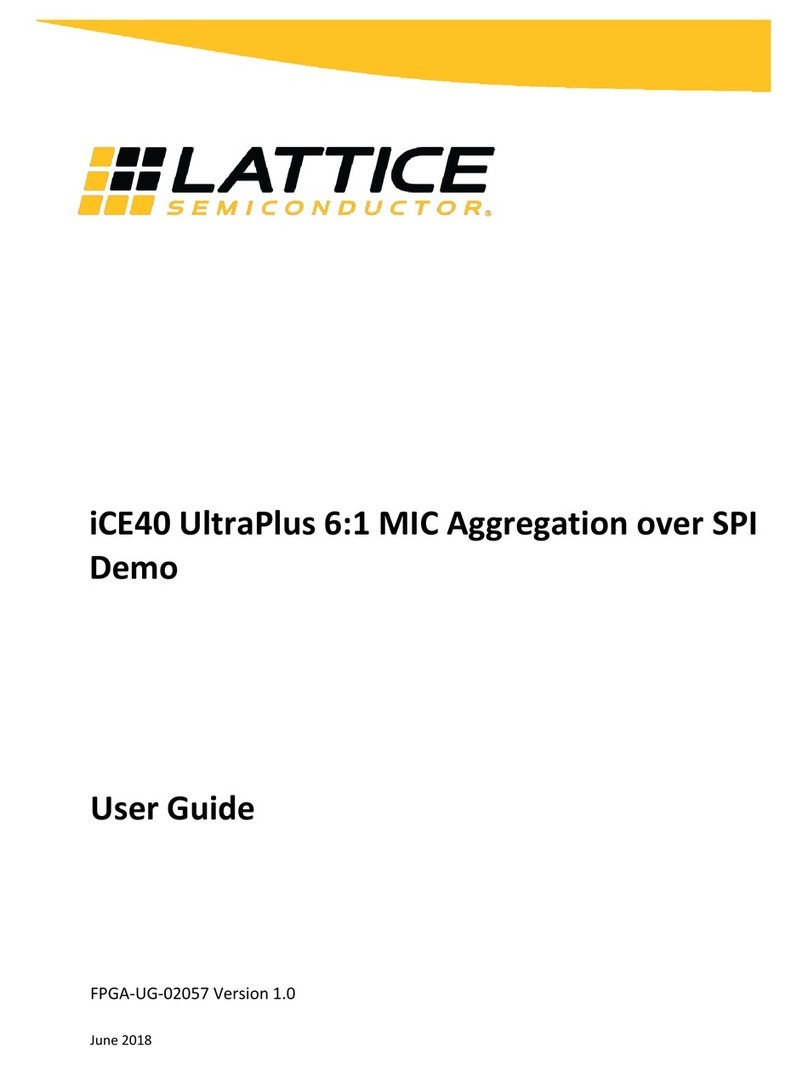
9
LatticeECP2 Standard Evaluation Board
Lattice Semiconductor User’s Guide
Table 20. Jumper Settings for SPI Emulation via J40
Power Setup
For stand-alone board operation, i.e. outside of a PCI/PCI-X backplane, the evaluation board must be supplied with
a single 5V DC power supply. 5V DC power may be applied using an AC adapter, such as the Condor Electronics
S-5V0-4A0-U11-206IP (or similar), plugged into the power jack at J47, or via the banana jacks at J45 (ground) and
J46 (5V DC).
Table 21. AC Adaptor Specifications
When the board is inserted into a PCI/PCI-X backplane, the on-board 3.3V regulator is automatically disabled; all
onboard power will be derived from the PCI/PCI-X 3.3V power rail.
Additional on-board regulators supply 1.2V, an adjustable voltage, and 5V (for the optional LCD panel). The adjust-
able voltage is set by the potentiometer R36, on the right side of the board, and can be set to any value between
1.22V and 2.5V.
The header at J30 allows a current measuring device to be inserted between 1.2V and the FPGA core. To measure
current remove power from the board, remove all of the jumpers at J30, install a meter between the odd pins and
the even pins, for example between pins 1 and 2, and apply power to the board. When measurement is complete,
remove power from the board and re-install all three jumpers.
Table 22. 1.2V to V
CC
Core
The header at J29 allows a current measuring device to be inserted between 3.3V and the FPGA’s V
CCAUX.
To
measure current, remove power from the board, remove the jumper at J29, install a meter between pins 1 and 2,
and apply power to the board. When measurement is complete, remove power from the board and re-install the
jumper.
Location Position Notes
J31 Open
J32 Open
J33 2 to 3
J34 1 to 2
J43
1 to 2 Open if driven by cable
3 to 4 Open if driven by cable
5 to 6 Open if driven by cable
J44 Open
J35, J36 Open Bypass Overflow
J35, J36 1 to 2 Not allowed
Voltage 5VDC +/- 10%
Current Capacity Up to 4A
Polarity Positive Center
Connector I.D. 0.1” (2.5mm)
Connector O.D. 0.218” (5.5mm)
Location Position Function Default
J30
1 to 2
Connects 1.2V to the FPGA Core
X
3 to 4 X
5 to 6 X
